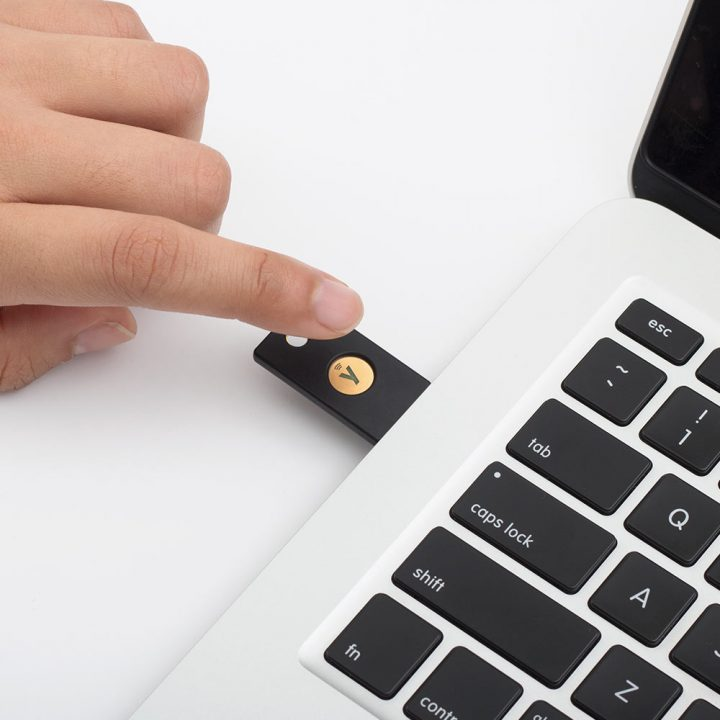How does authentication work?
Authentication should be a key component of your cybersecurity strategy. Keep reading to find out why.

Cybersecurity incidents continue to make headlines targeting everything from critical infrastructure sectors, banks, and healthcare facilities to manufacturing and technology businesses.
These attacks compromise sensitive data and disrupt operations. It’s a clear reminder of just how vulnerable our systems can be to breaches and ransomware.
Now, the good news: Countries around the world are stepping up their security measures. Across the U.S., data privacy is becoming a top priority. Laws like the California Privacy Rights Act (CRPA) are driving stronger protections for personal information. Meanwhile, the European Union has implemented stringent measures like the General Data Protection Regulation (GDPR) and the Cyber Resilience Act (CRA) to bolster cybersecurity and consumer protection.
As cyber threats evolve and regulations tighten, organizations must prioritize robust cybersecurity measures. Effective authentication is key to these defences and helps:
- Prevent unauthorized access
- Secure sensitive data
- Build stronger trust with customers and partners
GUIDE
What is authentication?
Authentication is the process of validating the identity of a user, device, server, or application before granting access to protected resources. The result? Only authorized entities can interact with your private data, information, identity, and systems.
The types of authentication can vary, depending on your needs:
- Client-side authentication involves using methods like usernames, passwords, tokens, and passkeys—a newer and phishing-resistant way to verify users
- Server-side authentication oftentimes uses certificates to identify trusted third parties
- Multi-factor authentication (MFA) combines two or more forms of verification, enhancing cybersecurity by requiring multiple proofs of identity.
MFA adds an extra layer of protection. And there’s little wonder why. In today’s threat landscape, sometimes you need both a password and a code sent to your phone. This makes it harder for attackers to access your account.
Want to know more about securing your security? Get the toolkit.
What about physical credential authentication?
That’s where a high assurance access control comes into play. With the right system, you can get the highest level of access control cybersecurity available in today’s market. That means:
- Added layers of encryption
- Boosted credential authentication
- Flexibility and scalability to address changing needs
- Compliance with regulatory guidelines for cybersecurity
What are passkeys and certificates?
Passkeys
Passwordless authentication is going mainstream as more users realize how it improves security over traditional methods. Passkeys are the next evolution in login security. Passkeys are simple to set up, resistant to phishing attacks, and don’t expose secrets even if a server is breached. That means instead of relying on a password you have to remember (or risk forgetting), passkeys use your device—paired with a fingerprint, face scan, or PIN—to log you in securely.
How does this work? It’s all powered by a pair of cryptographic keys. One is stored on your device and the other is public, stored on the site where you created your account. Together, these keys confirm your identity without sharing anything sensitive.

Certificates
A digital certificate is an electronic document used to prove the ownership of a private key. This establishes trust between its owner and an entity wishing to communicate with that owner.
One of the most common uses of certificates is for HTTPS-based websites, where a web browser validates that a web server is authentic. This ensures secure communication between the user and the website.
BLOG
What is zero trust security?
Zero trust, also known as zero trust security and zero trust architecture, is a security framework built on the principle: never trust and always verify. This means that devices and individuals, whether inside the corporate network or not, should never be trusted by default.
Here’s your cheat sheet:
✓ Continuous verification: Every action requires authentication, authorization, and validation before access to network appliances or data is granted
✓ Attribute-based access: Trust is evaluated on a per-transaction basis, considering factors like identity, geolocation, time and date—for example
✓ Limited privilege access: Users are granted access only to the specific data and systems they need for their roles
BLOG
Why authentication is a key component of your security infrastructure
When it comes to your physical security system, authentication, working in tandem with authorization, is the first line of defense. It confirms that users are exactly who they say they are before they’re given access.
That means hackers can’t pose as security operators to control, manipulate, or copy your sensitive data.
Once the security system authenticates the right identities, the next step is managing who can access what. This is called authorization.
How does authentication fit into Identity and Access Management (IAM)?
IAM covers all the policies and technologies that confirm the right person can access the right information at the right time, and for the right reasons. Authentication is a fundamental part of it all. Here’s how it integrates:
- Identity management: Maintains user data like usernames and roles
- Authentication: Verifies that users are who they say they are, using passwords, passkeys or a combination of many elements for multi-factor authentication
- Access management: Determines which resources authenticated users can access

What are the top ways of strengthening your authentication practices?
The best defence is always a good offence. It’s possible for your security team to take charge of their authentication process and:
✓ Embrace Multi-Factor Authentication (MFA) by combining for example a password and a security token to enhance user verification
✓ Adopt passwordless authentication through biometrics or hardware tokens
✓ Use digital certificates for verifying secure connections between servers and users to protect sensitive information
✓ Choose a high assurance access control system that offers encryption, credential authentication, and compliance with strict security regulations
✓ Adopt zero trust security and always verify every transaction and control access to resources and data
✓ Prioritize Identity and Access Management to manage user identities, authenticate access, and authorize permissions
